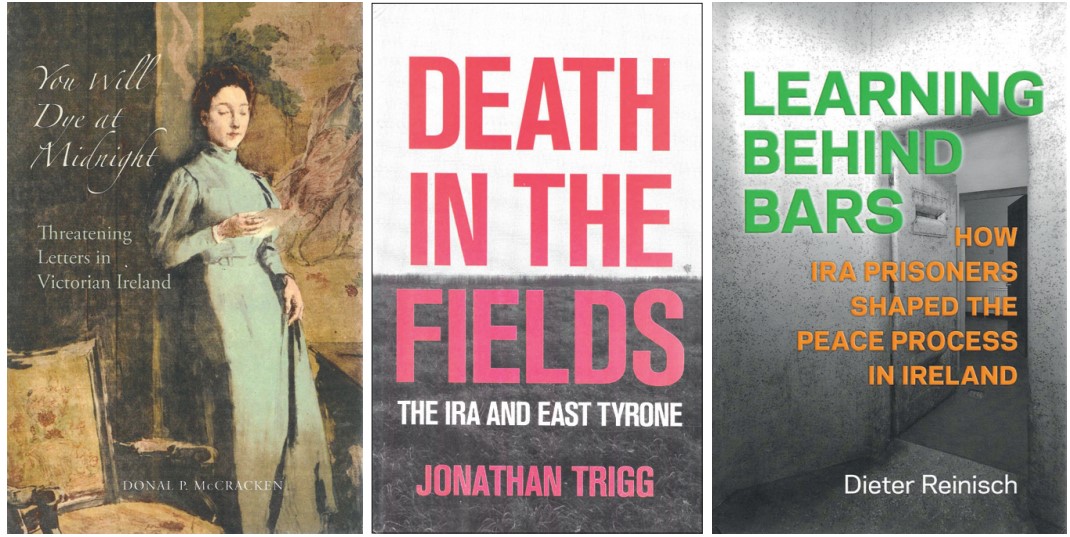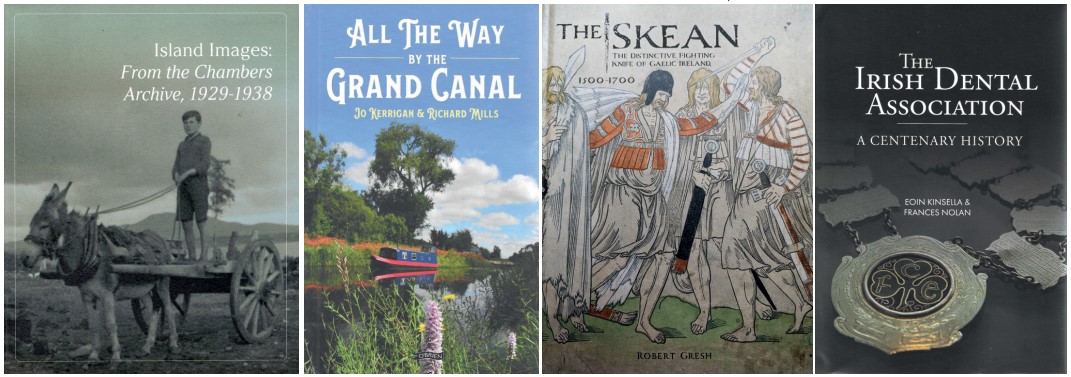Joe Culley
@TheRealCulls

Like most of us, I suspect, you think of the Irish Sea as ‘ours’. After all, it’s named for us. We happily, unconsciously, ignore the fact that Wales (never mind England) has a coastline nearly as long as ours dipping beneath it and that the Welsh might indulge some proprietary claim to it.
You might, therefore, feel a slight affront to learn that the author of the quite sparkling The turning tide: a biography of the Irish Sea is a Welshman—but fear not, for Jon Gower, a prolific author and broadcast documentary-maker, is wholly attuned to how the sea is an intimate link between the two lands. For example, we learn that the port village of Porthdinllaen, a tiny peninsula itself on the greater Llŷn peninsula, that appendix beneath Anglesey, translates as ‘the harbour of the fort of the Leinstermen’.
Crucially, Gower’s prose is a joy, a cross between the lyricism of Tim Robinson and the humour of Bill Bryson. His specific focus is on the area south of the Dublin–Holyhead axis and north of the Saltees to the Bristol Channel. He is a naturalist and one of his great fascinations is with seabirds, and so he flits easily from Viking raiders or the buttonmen on the Dublin docks to the gannets of the Saltees or the ‘fatal attraction’ of birds at the lighthouse on Ynys Enlli island. In truth, while The turning tide might be categorised as history, it would fit more comfortably, or as easily, in the travel section. Don’t miss it!
Another entertaining read is the wonderfully titled You will dye at midnight: threatening letters in Victorian Ireland. Donal McCracken, an emeritus professor at the University of KwaZulu-Natal in South Africa, tells us that Ireland was the ‘capital of the world’ for threatening letters at the time. They were almost invariably about land, and not blackmail.
‘Threatening letters were seen as giving fair warning, so justifying the next step, which generally never materialised. They were a satisfying stage between spreading malicious rumour and taking risky physical action, which might result in one being hanged.’
Not surprisingly, when evictions were running high, the number of letters multiplied. Landlords, their agents, magistrates (but not policemen) and bailiffs were prominent targets. Find out who wrote them, and what happened to both the authors and their targets.
Those of us of a certain age remember clearly when the SAS ‘ambushed’ an IRA unit who were attacking an isolated RUC station in the village of Loughgall, Co. Armagh, in 1987. Eight leading members of the East Tyrone brigade were wiped out. The counterattack in effect put an end to several years of large-scale violence in the region during which the IRA unit attempted to create a ‘no-go’ area for the security forces.

Now former Royal Anglian Regiment infantry officer Jonathan Trigg, who completed tours in Northern Ireland and Bosnia before going on to become a respected military historian, tells the wider story in Death in the fields: the IRA and East Tyrone. And I hear you say, ‘Hmmm …’.
Yes, it’s a delicate subject which requires the author to stay balanced on a narrow beam, and I think he does. Neither the IRA nor the security forces emerge as the good guys, nor are the darker acts of either glossed over. Trigg seems to have won the trust of the remaining participants for them to tell him their version of events as honestly as possible. Perhaps he achieves this precisely because is a military man. In a foreword, he writes: ‘… I often refer to the conflict as “the war” as well as “The Troubles”. I know that the latter is the accepted term, but I believe for those who fought in the struggle from all sides, it felt like a bloody war.’
Whereas Trigg’s account definitely falls into the category of popular history, Dieter Reinisch’s Learning behind bars: how IRA prisoners shaped the peace process in Ireland is an academic work. Nevertheless, it is essentially an oral history, based on 34 interviews with republicans in internment camps and prisons both north and south. Interestingly, as the surname suggests, Reinisch is Austrian, and that distance from the conflict, he suggests, along with his youth, allowed the interviewees to be much freer in their responses.
The two books provide a telling contrast: while the young men of the Tyrone brigade were focused on war and were even contemplating breaking with the IRA over its leaders’ move towards a political campaign, their contemporaries and colleagues in the prison ‘universities’ were, with self-education, refining and deepening their political understanding of the conflict. Reinisch’s work is not a page-turner, but it will stand as a significant contribution to the field of study.
George Chambers was an Englishman born in 1873 who, in his 60s, spent his summer holidays visiting the islands off our west coast. Island images: from the Chambers Archive, 1929–1938 is a series of essays examining the collection of photographs he took over that decade, arranged in five albums, and which found their way into the Galway County Archives. It must be said that Chambers was never going to make it as a professional photographer. Few of the images are eye-catching—indeed, a number are badly out of focus—but their worth is in the view of the people he encounters as they go about their daily lives. One of the best images, from the Blaskets, is of Eibhlís Ní Shúilleabháin, who befriended Chambers and corresponded with him for twenty years. That correspondence then became Ní Shúilleabháin’s Letters from the Great Blasket.
This collection was funded by Creative Ireland through Galway County Council Cultural and Creativity Strategy. The albums are available to view on the council’s digital archive and can be downloaded from http://www.galway.ie/en/services/more/archives/publications/. The print edition is available (I assume) from the county council.
All told, it took 36 years to complete that remarkable piece of engineering that is the Grand Canal. The initial stretch was begun in Sallins, Co. Kildare, in 1768, but it wasn’t until 1804 that you could travel the full length from Dublin to Shannon Harbour. In All the way by the Grand Canal, author Jo Kerrigan and photographer Richard Mills tell the story of the canal and, more specifically, offer a handy guide for those who now travel its path for leisure, whether by hiking boot, bicycle or boat. Remarkably, the heyday of the canal was relatively brief, 50 years, for its usefulness was superseded almost overnight by the arrival of new technology: in 1851 the Dublin–Galway railway line opened.
In The skean: the distinctive fighting knife of Gaelic Ireland, author Robert Gresh, whose grandfather was from north Galway, makes a point of acknowledging the pioneering work of the late Etienne Rynne, professor of Archaeology at (the then) UCG. With this attractive hardback, a US production, Gresh seems to have gathered everything that is known about the ancient weapon. According to the blurb:

‘The skean fell into disuse in the eighteenth century without being well documented, and surviving examples are often out of sight in reserve collections, private collections, or small local museums … This study is intended to aid collectors and curators in the identification of original artifacts, while also assisting fabricators in the creation of replica pieces. Also included is information on manufacturing and fighting techniques.’
Eoin Kinsella is managing editor of the Royal Irish Academy’s Dictionary of Irish Biography, so the Irish Dental Association wasn’t taking any chances when it asked him to be the lead author of its centenary publication. The Irish Dental Association: a centenary history is a handsome, professional and solid piece of work. It is also, almost by its nature, rather stolid. There is some argument as to when the association officially came into being; it was established in December 1922, at the height of the Civil War, but didn’t hold its first AGM until the next month/year. While the authors strike an easy tone, this book is for its intended audience.
Jon Gower, The turning tide: a biography of the Irish Sea (Harper North, £20 hb, 336pp, ISBN 9780008532635).
Donal P. McCracken, You will dye at midnight: threatening letters in Victorian Ireland (Eastwood Books, €20 pb, 230pp, ISBN 9781913934163).
Jonathan Trigg, Death in the fields: the IRA and East Tyrone (Merrion Press, €18.99 pb, 286pp, ISBN 9781785374432).
Dieter Reinisch, Learning behind bars: how IRA prisoners shaped the peace process in Ireland (University of Toronto Press, Can$70 hb, 240pp, ISBN 9781487545826).
Patria McWalter (ed.), Island images: from the Chambers Archive, 1929–1938 (Galway County Council Archives, available free on-line, 128pp, ISBN 9781399935456).
Jo Kerrigan and Richard Mills, All the way by the Grand Canal (O’Brien Press, €19.99 hb, 192pp, ISBN 9781788493437).
Robert Gresh, The skean: the distinctive fighting knife of Gaelic Ireland (Schiffer Military, $24.99 hb, 88pp, ISBN 9780764366376).
Eoin Kinsella and Frances Nolan, The Irish Dental Association: a centenary history (Eastwood Books, €25 hb, 160pp, ISBN 9781913934521).
